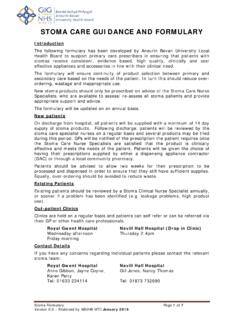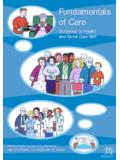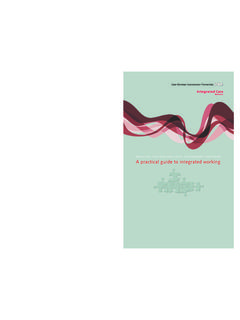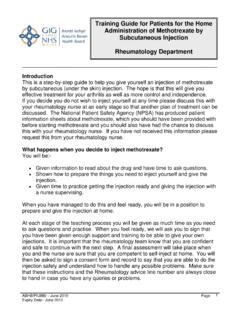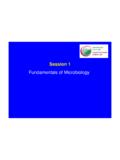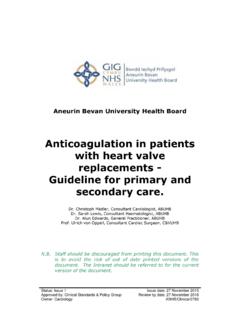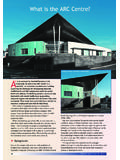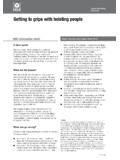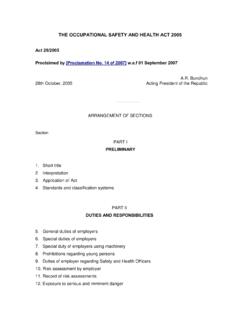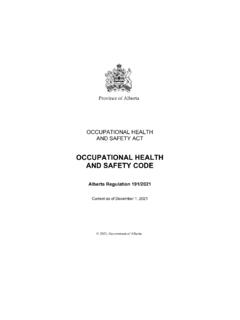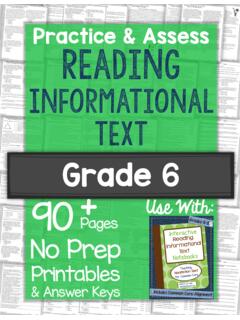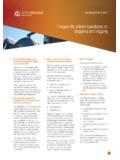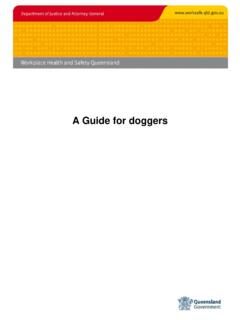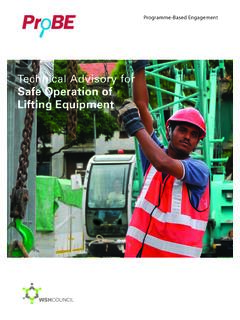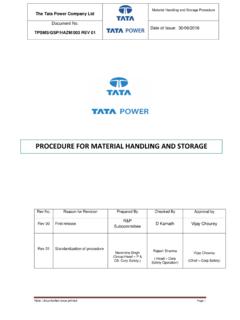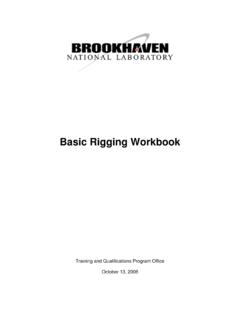Transcription of Guidance Relating to Hoists and Slings
1 Status: Issue 1 Issue dat e:March 2013 Approved by: H&S Committee Review by date: March 2016 Owner: Health & Safety Policy Number: ABHB/Health & Safetyl/0675 Aneurin Bevan Health Board Guidance Relating to Hoists and Slings Staff should be discouraged from printing this document. This is to avoid the risk of out of date printed versions of the document. The Intranet should be referred to for the current version of the document. Aneurin Bevan University Health Board ABHB/Health & Safety/0675 Title; Gui dance rel ating to Hoists and Slings Owner: Health & Safety Status: Issue 1 Issue dat e: March: 2013 Approved by: H&S Committee Review by date: March: 2016 1 Contents: 1 Purpose of this 2 2 Terms, roles and responsibilities.
2 2 Transfer specialist .. 2 Assistant 3 3 Introduction .. 3 4 Hoists .. 4 Hoists can be categorised into three main groups: .. 4 Hoist safety checks .. 4 5 6 Main sling styles can generally be categorised as follows: .. 6 Sling safety checks .. 7 Arjo flite Slings (disposable) .. 7 Arjo polyester Slings (washable) .. 8 6 Compatibility statement ..11 7 Guidance on measuring a person to select the correct sling size 10 8 Guidance on Slings for people with particular needs .. 11 Lower limb amputation .. 11 Special needs .. 11 Plus sized person .. 12 9 Performing the task of hoisting.
3 12 Staff need to: .. 12 Person being 13 14 10 Equipment care, servicing and maintenance (refer to lifting operations and lifting equipment regulations 1998 .. 14 11 16 12 Ordering of equipment and equipment loans/hire .. 16 Ordering .. 16 Loans and hiring .. 16 13 Infection 17 14 Alternative equipment for lifting and transferring people .. 17 15 Community and education settings .. 18 16 Manual handling team contact details .. 18 17 Hoist company contact details .. 19 18 References .. 19 19 Other information .. 202 Appendix 1 - flowchart for sling management .. 21 Appendix 2 - record of inspection for Slings .)
4 22 Aneurin Bevan University Health Board ABHB/Health & Safety/0675 Title; Gui dance rel ating to Hoists and Slings Owner: Health & Safety Status: Issue 1 Issue dat e: March: 2013 Approved by: H&S Committee Review by date: March: 2016 2 1 PURPOSE OF THIS Guidance The aim of this Guidance is to provide all staff that are involved with moving and handling people using hoisting equipment, with information and advice on safe working practice. It replaces previous Guidance that solely related to Slings . This Guidance should be used in conjunction with Aneurin Bevan University Health Board s (ABUHB) Safer Manual Handling Policy, manual handling training documentation and manual handling risk assessment processes.
5 It should also be used in line with legal requirements such as the Manual Handling Operations Regulations 1992 (updated 2002), Lifting Operations and Lifting Equipment Regulations 1998 (LOLER 1998) and equipment manufacturers instructions. Through this Guidance staff will be able to: understand roles and responsibilities of all staff Relating to hoisting procedures. use information regarding safety checks and procedures in order to avoid potential risks that could otherwise be involved with the activity. have an awareness of the various types of Hoists and Slings in use within ABUHB and their purpose and function.
6 Utilise information such as charging of batteries, servicing and maintenance procedures to ensure that equipment is cared for in a safe manner. manage any faults identified and organise repairs know who to refer to for further assistance and practical support. 2 TERMS, ROLES AND RESPONSIBILITIES The Safer Handling Policy lists terms, roles and responsibilities of ABUHB employees involved with management and use of Hoists and Slings . In addition, ABUHB provides local support in the form of Transfer Specialists and Assistant Trainers. Transfer Specialist A professionally qualified employee who has successfully completed the ABUHB Transfer Specialist course to train people handlers, monitor and assess manual handling practice, provide employees with appropriate update training; support Aneurin Bevan University Health Board ABHB/Health & Safety/0675 Title; Gui dance rel ating to Hoists and Slings Owner: Health & Safety Status: Issue 1 Issue dat e: March: 2013 Approved by: H&S Committee Review by date: March: 2016 3 their line manager to manage manual handling and attend an annual update.
7 Assistant Trainer A clinical employee (non professionally qualified) who has successfully completed the ABUHB Assistant Trainer course and assists the local Transfer Specialists to train practical methods to employees; monitor manual handling practice in their work place and attends annual update. The Assistant Trainer will not train in isolation but will assist training facilitated by Transfer Specialists. 3 INTRODUCTION Use of Hoists has become an integral role of handlers over a number of years. It has long been recognised that lifting people is hazardous (Lloyd et al 1981: Health Services Advisory Committee 1984).
8 There is also a requirement under more recent legislation Manual Handling Operations Regulations 1992 (as amended) (HSE 1992) to avoid hazardous manual handling operations as far as is reasonably practicable, and, where this cannot be achieved, to take steps to reduce the risk. Although the use of Hoists can reduce musculoskeletal risks the HSE also asks us to consider the other risks associated with hoisting people. Evidence from incident reports has shown that people have been injured whilst being moved using hoisting equipment. The degree and type of injury varies depending on any number of factors.
9 Falls during hoisting have resulted in severe injuries, from broken bones through to fatalities. Love, J. 2011. The key to successful and comfortable hoist transfers lies in a large part with having the correct sling both in size and type. Each person must be assessed individually for the size and type of sling suitable to meet their needs. Orchard, S. 2005. This must be written in their individual Patient Handling assessment and Care Plan as stated in ABUHB s Safer Handling Policy. It is, therefore, essential that people involved in use of such equipment receive suitable practical training and regular refresher training to maintain and update their skills.
10 Lifting Operations and Aneurin Bevan University Health Board ABHB/Health & Safety/0675 Title; Gui dance rel ating to Hoists and Slings Owner: Health & Safety Status: Issue 1 Issue dat e: March: 2013 Approved by: H&S Committee Review by date: March: 2016 4 Lifting Equipment Regulations 1998 states that lifting operations are to be carried out by people who are competent. If still in any doubt regarding the selection or use of Hoists and Slings , after reading this Guidance , always seek practical support from ward /department Transfer Specialists, work based therapists or manual handling advisors.
